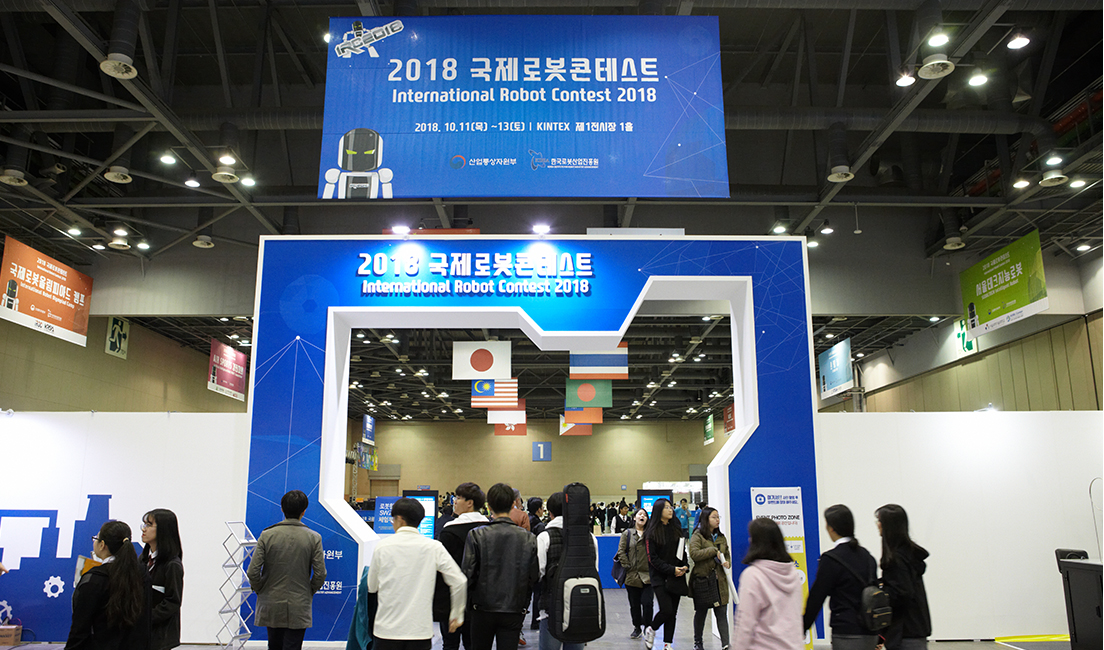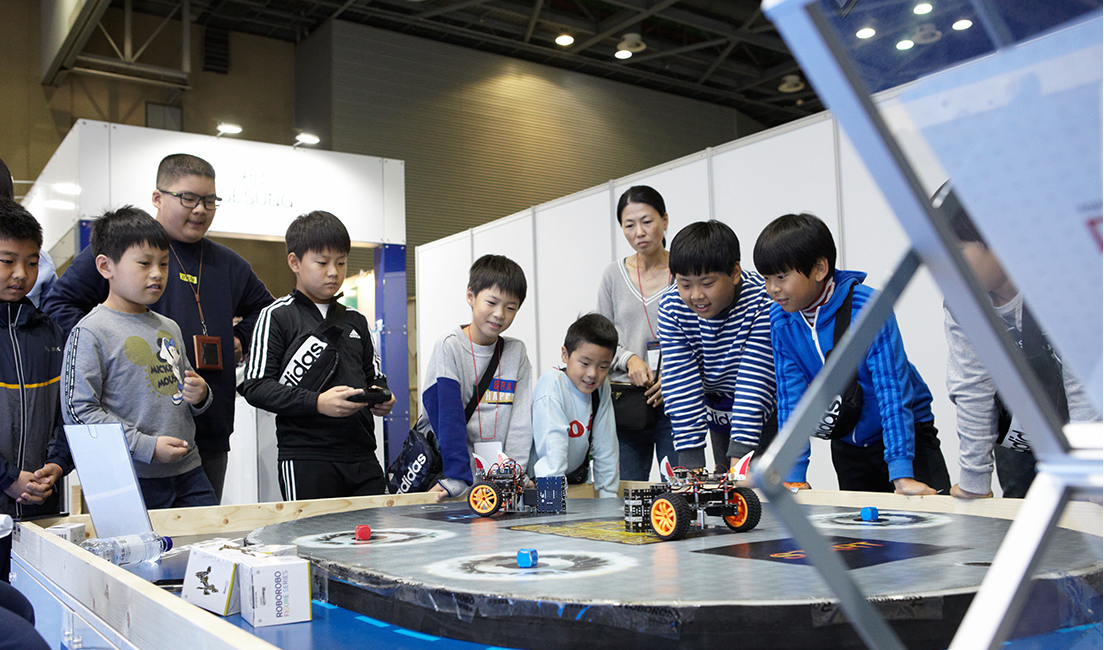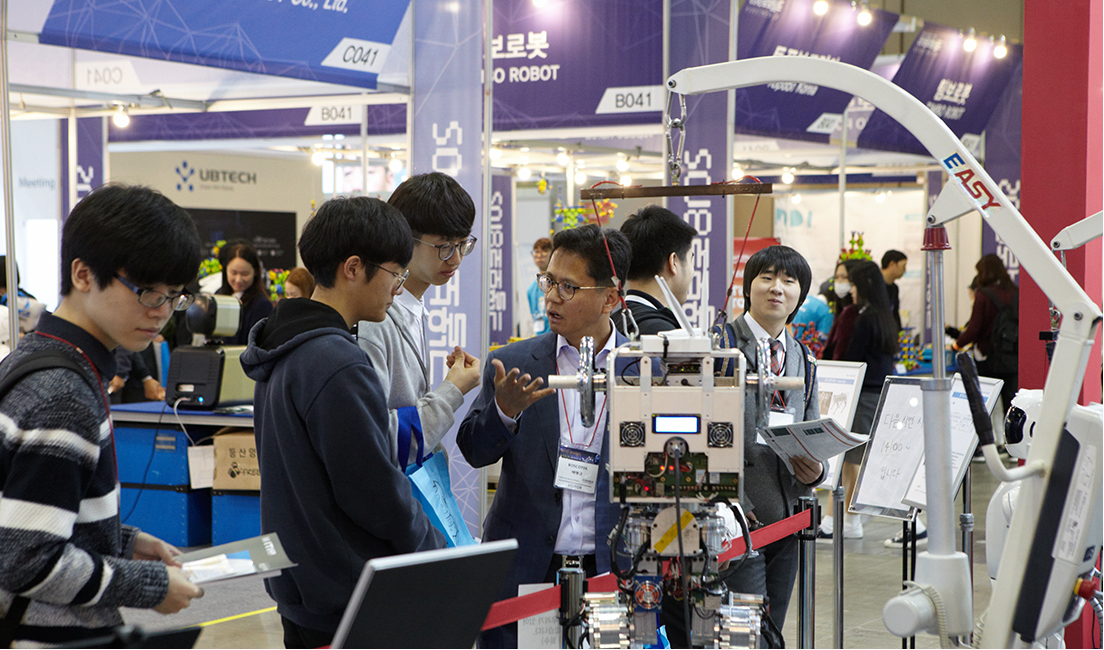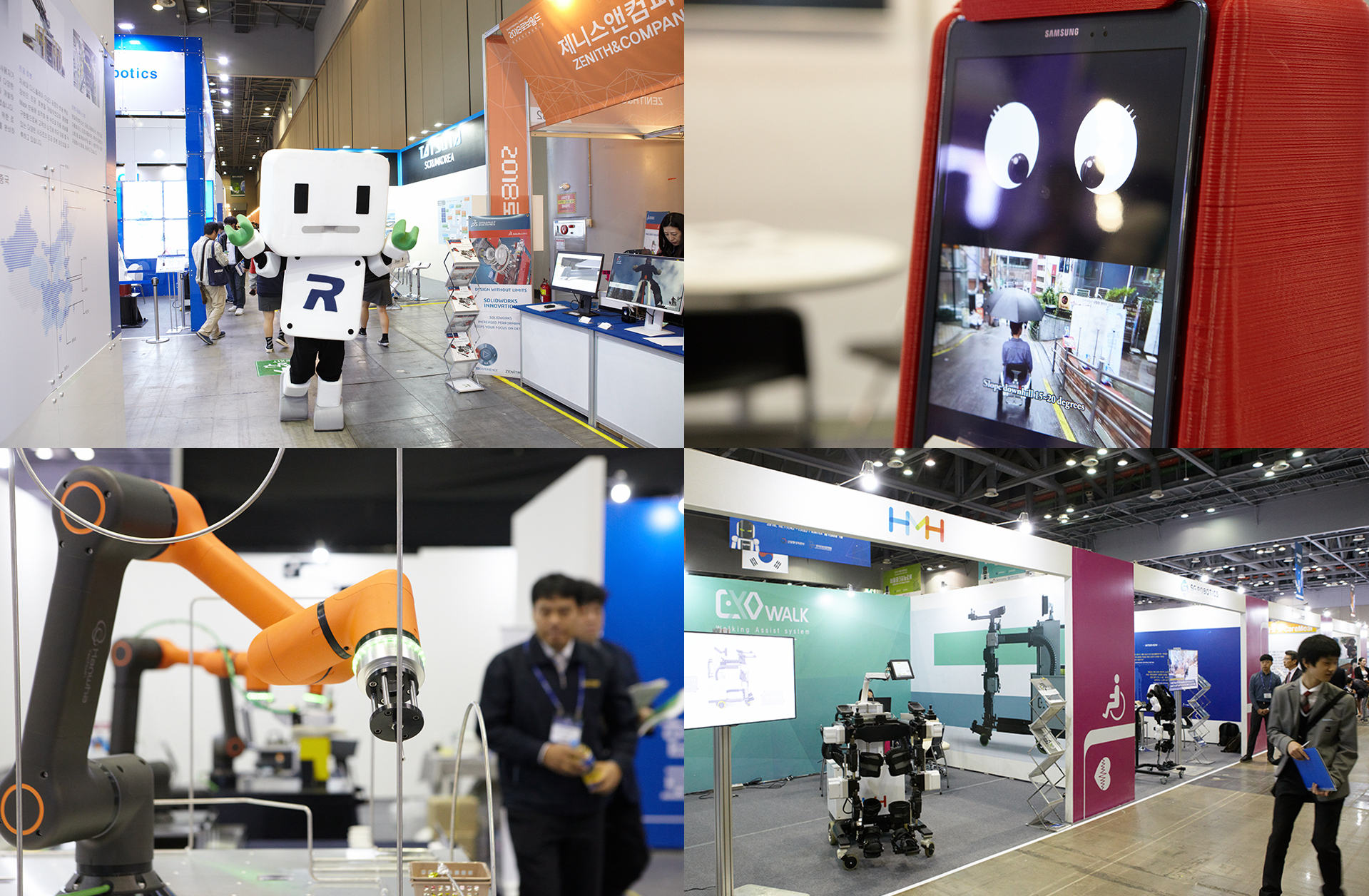01
Robots Expanding Their Roles in Our Daily Lives


You might once have imagined someone doing what you have to do on behalf of yourself every day; for example, tiresome household chores, childcare and parenting that is effort-consuming, and other stressful tasks. Under the theme of “Smart Industry, Smart Life,” this year’s Robot World presented various robots intended to make our daily lives and industrial sites smarter. This year’s exhibition focused its attention on collaborative robots and wearable robots.
In contrast to the industrial robots frequently seen in automotive or semiconductor production lines, collaborative robots are designed to help human workers with simple and repetitive tasks. So far, most robots have been used to carry out specific tasks by following set movements in a separate space from human workers. Indeed, manufacturers have had no other choice but to do so because of safety issues; workers’ negligence might cause severe injuries, for example, collisions between robots and human workers. To prevent these potential accidents, it is necessary to develop technologies that enable robots to autonomously detect and prevent dangers and risks. Many cooperative robot-related companies participated in this year’s Robot World, and this is a clear indication of the significant advancement of the cooperative robot industry. Notably, a special hall dedicated to collaborative robots & industrial safety was prepared to present the direction of future manufacturing processes.
Also, various wearable robots that can be applied to multiple service sectors, including national defense, medicine, construction and agriculture, were showcased. Wearable robots have many names, such as robot suits, exoskeleton robots, or power augmentation robots, and help workers with physical labor at industrial sites. Aside from that, wearable robots can be used to help elderly people move around or can support the rehabilitation of patients with paralysis while broadening the scope of their applications. Also, robots designed to move baggage, do the cleaning, play with children, or read people books were introduced.
Various wearable robots showcased in the exhibition reminded us of “Inspector Gadget”, an American cartoon. Soon, or later in the near future, we might see people equipped with a multi-functional wearable robot everywhere, as in the cartoon. When the time comes, however, those robots will help us in a much more amiable and favorable manner than what we saw in the cartoon.
02
Future Direction of the Robot Industry


Aside from exhibitions, Robot World 2018 was accompanied with various activities, including the International Robot Contest, the International Robot Conference, and Promotional Halls for each field. The International Robot Contest is Asia’s largest competitive robot exhibition, intended for primary and secondary school students as well as the general public. Under this year’s theme of “The Coexistence of Humans and Robots,” all participants fiercely competed with one another in a total of 30 categories. Notably, this year the competition was more heated than ever with over 3,000 participants from nine countries, including Korea, Japan, and China. One might say the success and spread of the robot industry and culture depends on the future robot talent present here. Throughout the course of the contest, participants’ eyes were bright and twinkling.
In the meantime, a series of various forums and workshops about the Fourth Industrial Revolution and AI were held to reflect the improved R&D competitiveness of the domestic robot industry and in line with increasing trends of domestic robot companies entering foreign markets. Notably, this year’s International Robot Conference served as a venue for in-depth discussion of biomimetic robots that can be applied to various fields, including national defense, disaster response, and construction. Biomimetic robots are special types of robots that emulate the outstanding characteristics of living organisms to overcome the limitations of existing robots. These robots, when actualized, will significantly contribute to saving lives in disasters, such as the earthquake in Indonesia. Robot World, celebrating its 13th anniversary this year, has evolved into a robot industry exhibition that represents not only Korea but also Asia. We hope that Robot World will continue to lay the groundwork for the advancement of the robot industry and carry its weight going forward.









